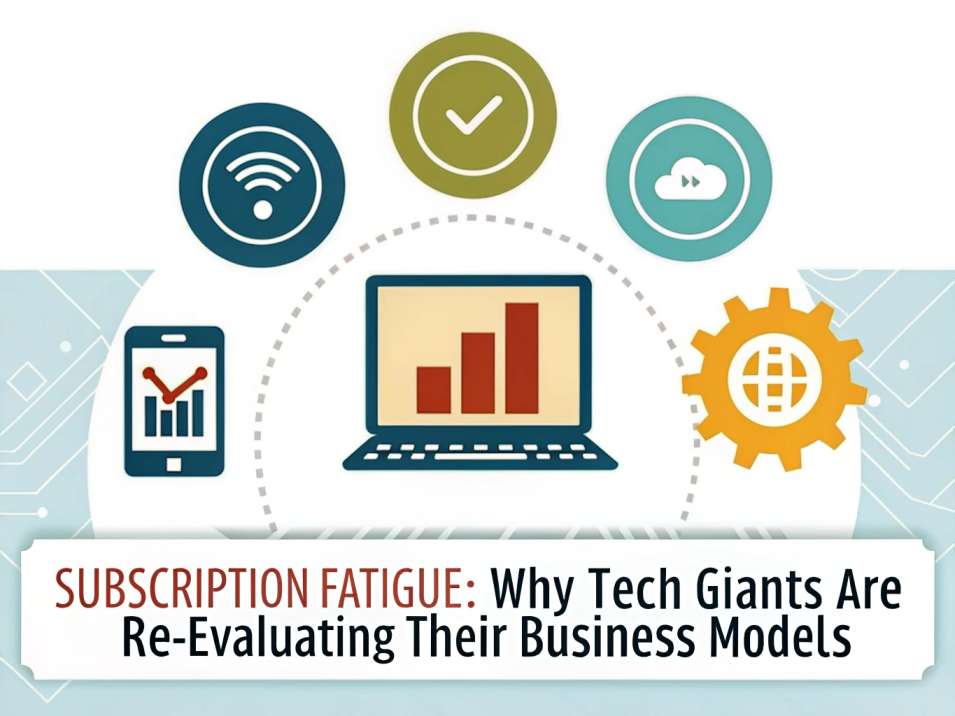For the past decade, the subscription model has been the dominant force in the tech industry. From streaming services and software to gaming and news, consumers were promised endless content and features for a predictable monthly fee. This model proved highly successful, creating stable revenue streams for tech giants and providing a convenient all-access pass for users. However, a new challenge is emerging: subscription fatigue. Consumers are now finding themselves overwhelmed by the sheer number of subscriptions, leading many to cut back and question the value they are getting. In response, tech companies are being forced to re-evaluate their business models, shifting from a subscription-first to a more flexible, hybrid approach.
This guide will explore the rise of subscription fatigue, its impact on the tech industry, and the innovative ways companies are adapting to a new economic reality.
The Rise of the Subscription Model: A Golden Age
The subscription model’s appeal was undeniable. For companies, it offered a predictable and recurring revenue stream, reducing their reliance on one-time sales. For consumers, it promised a simple, all-in-one solution. The model’s success was driven by a few key factors:
- Streaming Services: Companies like Netflix and Spotify led the charge, proving that users were willing to pay monthly for a vast library of content.
- Software as a Service (SaaS): The shift from buying boxed software to paying for a monthly license, as seen with Adobe and Microsoft, ensured users always had the latest version while providing a stable income for the companies.
- Convenience: Subscriptions were a frictionless way to access a wide range of services, from news (The New York Times) to groceries (Amazon Prime), simplifying the consumer experience.
This created a virtuous cycle. As more services adopted the model, consumers became accustomed to paying for subscriptions, further fueling its growth.
The Inevitable Backlash: Subscription Fatigue Sets In
The turning point came when the number of subscriptions began to outpace what an average consumer could afford or manage. The once simple “all-access” model splintered into dozens of separate, costly services.
- Financial Strain: The combined cost of multiple subscriptions—Netflix, Spotify, a gaming service, a news outlet, and a few productivity apps—can add up quickly, becoming a significant burden on household budgets.
- Content Fragmentation: A user might have to subscribe to two or three different streaming platforms to watch all the shows and movies they want, a stark contrast to the initial promise of an all-in-one solution.
- Lack of Value: Many users report paying for subscriptions they rarely use, leading to a sense of waste and a desire to consolidate or cancel services. This psychological burden is a core element of subscription fatigue.
The New Hybrid Model: How Tech Giants Are Adapting
In response to this consumer burnout, tech companies are exploring new hybrid models that offer more flexibility and value, moving beyond a one-size-fits-all subscription.
- Ad-Supported Tiers: Platforms like Netflix, Disney+, and Spotify are now offering cheaper, ad-supported subscription tiers. This allows them to retain price-sensitive customers while generating a new revenue stream from advertising.
- Freemium and Pay-Per-Feature: Many software and app developers are leaning into a “freemium” model. They offer a basic, free version of their service and then charge a fee for premium features. This allows users to get value from the product without a mandatory subscription, while still providing a clear path to monetization.
- Bundling Services: Companies are bundling multiple services together to provide more value. For example, Amazon Prime combines video, music, and free shipping into a single subscription. Similarly, a mobile carrier might bundle a streaming service with a phone plan. This approach makes each individual service feel more valuable.
- Focusing on Community and Exclusivity: To justify a subscription, many companies are now focusing on building strong communities and offering exclusive, high-quality content that cannot be found elsewhere. This gives users a reason to stay subscribed, even if the price is high.
Conclusion: The Future is Flexible
The era of the simple, one-size-fits-all subscription is over. Consumers are now more discerning about where they spend their money, forcing tech giants to innovate their business models. The future of the tech industry will not be defined by a single payment model but by a flexible, hybrid approach that combines ad-supported content, freemium services, and smart bundling. This shift is not just a response to subscription fatigue; it’s a necessary evolution that will shape how we consume and pay for technology for years to come.
